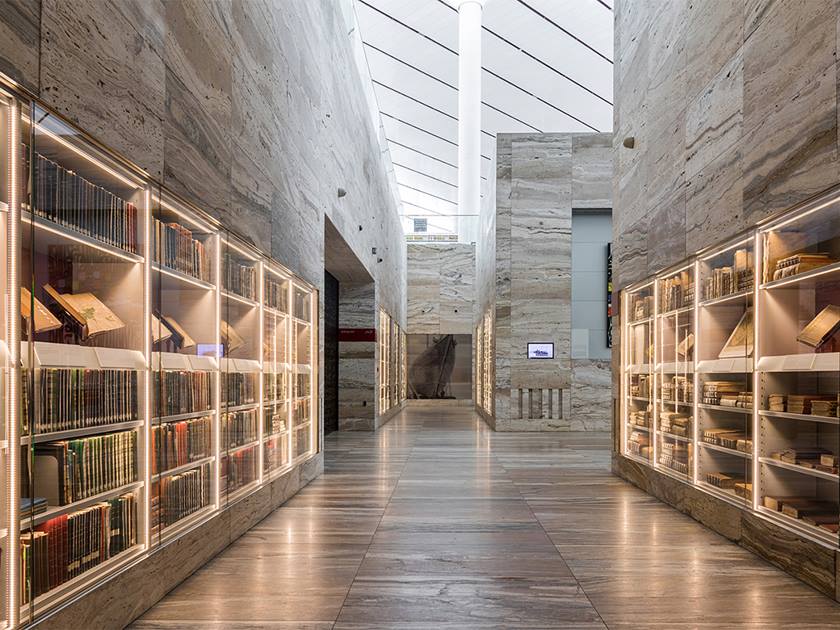QNL Contains Two Rare Books by European Travelers Describing Hajj

Doha, June 25 (QNA) - Qatar National Library (QNL) has many invaluable rare and old books, as well as manuscripts that cover various topics on knowledge, science, arts and literature.
The library contains books and manuscripts written by foreign travelers, but ones describing Mecca and Hajj are most of importance, since the typical writings of foreigners dealt with Arab life, but not Hajj itself. Throughout history, only few Europeans described Mecca and the Medina in the Middle Ages. And because entering Mecca is prohibited for non-Muslims, only two witnessed Hajj.
Qatar National Library revealed to Qatar News Agency (QNA) two of the most important books in their Heritage Library, in which foreign travelers experience Hajj in Mecca.
The first book is by British sailor Joseph Pitts (1663 - 1735), who was captured and bought by a Muslim sailor. The two men embarked on a journey to Mecca, travelling from Algeria to Alexandria by sea, then sailing along the Nile to Cairo, and from there traveling overland to Suez. They then set sail from Suez on a month-long voyage to the port of Rabigh before proceeding to Jeddah and finally reaching Mecca.
Pitts was the first Englishman in modern history to visit Mecca, in 1091 AH (1680 CE). He is known for being the first to describe the western pilgrimage route, and his journey is one of the earliest accounts of a European traveling to Arab lands. His book A True and Faithful Account of the Religion and Manners of the Mohammetans depicts the most important city in the Islamic world, its inhabitants, their customs and Hajj traditions during a period rarely documented by books. His book became one of the crucial references for subsequent European explorers and adventurers who sought to venture into the mysteries of the Arabian desert.
Pitts described the scene of pilgrims with admiration: "It was a sight, indeed, able to pierce ones heart, witnessing so many thousands in humbleness, with their naked heads and cheeks watered with tears, and to hear their grievous sighs and sobs, begging earnestly for forgiveness and promising a fresh start." The second book is by Frenchman Léon Roches (1809 - 1901) titled Thirty-Two Years Through Islam (1832-1864). Unlike the current Hajj season, which is in summer, Roches pilgrimage coincided with winter. He describes his journey to Mecca as follows: "The night was cold and dark... I can’t find words to describe the magnificent scene of numerous camps illuminated by the glow of fires in front of the tents of rich and well-off Muslims. The light emanating from those fires allowed me to see thousands of latecomer pilgrim caravans." Regarding the Day of Arafat, Roches writes: "The ninth of Dhu al-Hijjah, 1257 AH, January 22, 1842, is a day I will never forget as long as I live. A cannon shot announced the beginning of the Fajr dawn prayer, and the voices of muezzins resonated from several camps, calling loudly for prayer." Roches describes the scene of pilgrims in the final hours of the Day of Arafat with words filled with reverence and admiration, saying: "The muezzin called for prayer, and the preacher began his sermon. I couldn't understand what he was saying, but I heard his supplications to Allah. With each supplication, he would raise his arms slowly towards the sky, and sixty thousands of the present pilgrims would follow suit, repeating harmoniously: 'Labbaik Allahumma Labbaik.' Can a similar scene be described? I won't attempt to do so because if I did, I would diminish its greatness and undermine its magnificence." Both Pitts and Roches offer unique perspectives on the scene of pilgrims in Arafat during the 17th and 19th centuries. Their firsthand accounts provide invaluable historical documentation and shed light on the experiences of non-Muslim Europeans who witnessed Hajj and captured the essence of this significant religious event. Qatar National Library provides access to these two books in the Heritage Library.
Despite 343 years having passed since Joseph Pitts saw the rituals of Hajj and 181 years since Leon Roches journey to the Holy Land, their journeys remain significant historical records, despite neither of them being Muslims. They describe the most important cities of the Islamic world, in Algeria, Egypt, and Hijaz, during a historical period documented in only a few writings that depict the most important journey undertaken by any Muslim in their lifetime. (QNA)





